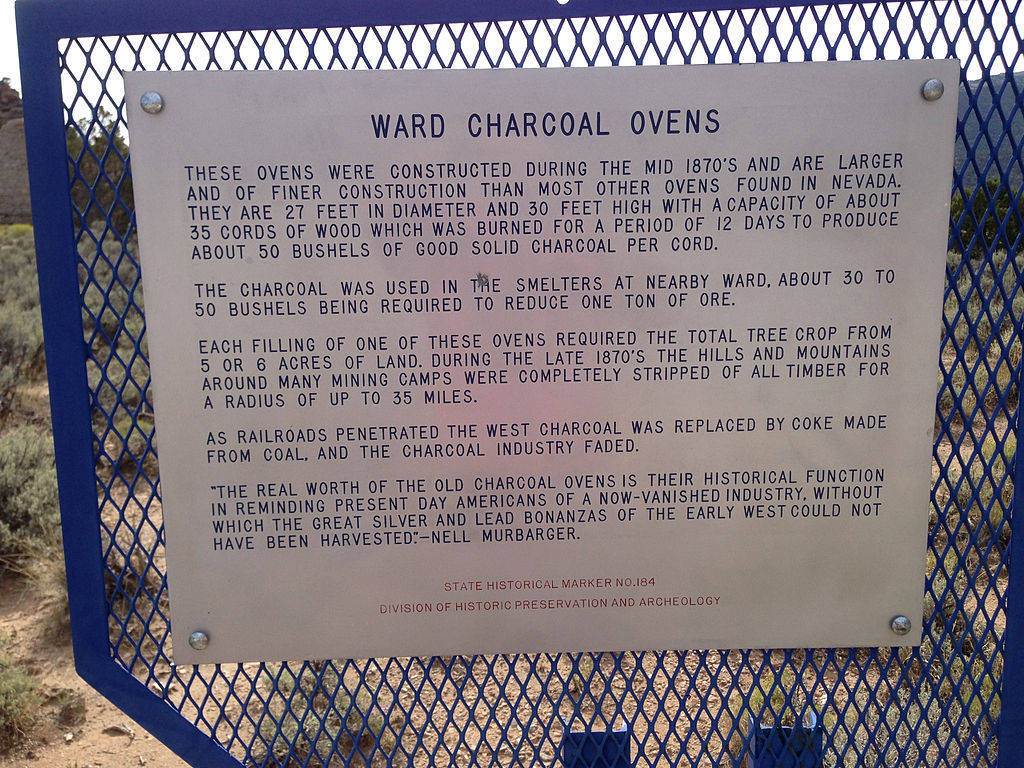Exploring the History of Ward Charcoal Ovens

Ward Charcoal Ovens, located in Ely, Nevada, is a fascinating piece of history that has stood the test of time. These beehive-shaped ovens were used to produce charcoal during the late 1800s and early 1900s. Today, visitors can explore the remains of these ovens and learn about their important role in the development of the American West.

History of Ward Charcoal Ovens
The history of Ward Charcoal Ovens is a story that deserves to be told. From its humble beginnings as a mining settlement to its transformation into one of the largest charcoal production sites in Nevada, this site played an essential role in shaping the region’s economy and society. They were first built in 1876 in Ward, Nevada to support the booming mining industry. The ovens were made from locally sourced sandstone and provided a crucial resource for silver smelting operations.
Nevada Nature and Wildlife Tours
The design of the Ward charcoal oven was unique because it allowed for the efficient production of high-quality charcoal. The ovens could hold up to 35 cords of wood and produced around 1,750 bushels of charcoal per week, which was a significant amount at the time.
Despite their importance to the mining industry, Ward charcoal ovens fell out of use due to the lack of silver ore to process in the smelters and a lack of timber to convert to charcoal. However, some examples have been preserved as historical landmarks. These structures offer an interesting glimpse into the history of industrialization and innovation during America’s westward expansion.
Visit the Grand Canyon United States of America

The Origins of Ward Charcoal Ovens
Ward charcoal ovens are a structure made of stone that was used in the late 1800s to turn wood into charcoal. The ovens were named after Thomas Ward, who operated several mining claims in Nevada and needed a reliable source of fuel for his mines. Constructed between 1876 and 1879, these ovens were some of the largest ever built, measuring thirty feet high and twenty-five feet wide.
The Ward charcoal ovens were built by Swiss-Italian charcoal workers called “Carbonari ” who brought their charcoal-making skills with them from Europe. The design incorporated several unique features that improved efficiency and allowed for continuous operation over long periods. These features included an arched doorway that facilitated airflow through the oven and a series of flues that captured waste gases and directed them back into the oven to increase heat.
Top 10 best places to visit in the United States

Decline and Preservation Efforts
After years of natural erosions and vandalism, these historic structures are still in good condition. To prevent complete deterioration, preservation efforts have been taken to restore and maintain the Ward charcoal ovens. One such effort includes stabilizing the structures by installing support beams and filling in gaps between bricks with mortar.
Preserving historic sites like the Ward charcoal ovens is crucial not only for their cultural value but also for their potential economic impact on local communities through tourism. By continuing these preservation efforts, future generations will be able to appreciate and learn from this important piece of Nevada’s history.


Present-day Significance and Tourism
Today, the Ward charcoal ovens serve as a unique attraction for tourists visiting Ely, Nevada. The site has been designated as a state historic park and offers visitors the opportunity to step back in time and explore the area’s mining history. Besides its historical significance, the ovens’ unique construction also makes it an interesting spot for photography enthusiasts.
The site’s importance is not limited to tourism alone; it also serves as an excellent example of conservation efforts. The Ward charcoal ovens have undergone restoration work over several years to preserve them for future generations. Additionally, interpretive displays are available on-site to educate visitors about how these structures were used during their operational period.
Ward charcoal ovens matter because they connect us to our past and help us understand how people lived during a time when resources were limited, and survival required ingenuity and resourcefulness. By preserving these structures, we can ensure that future generations will have access to this important part of our shared history.




